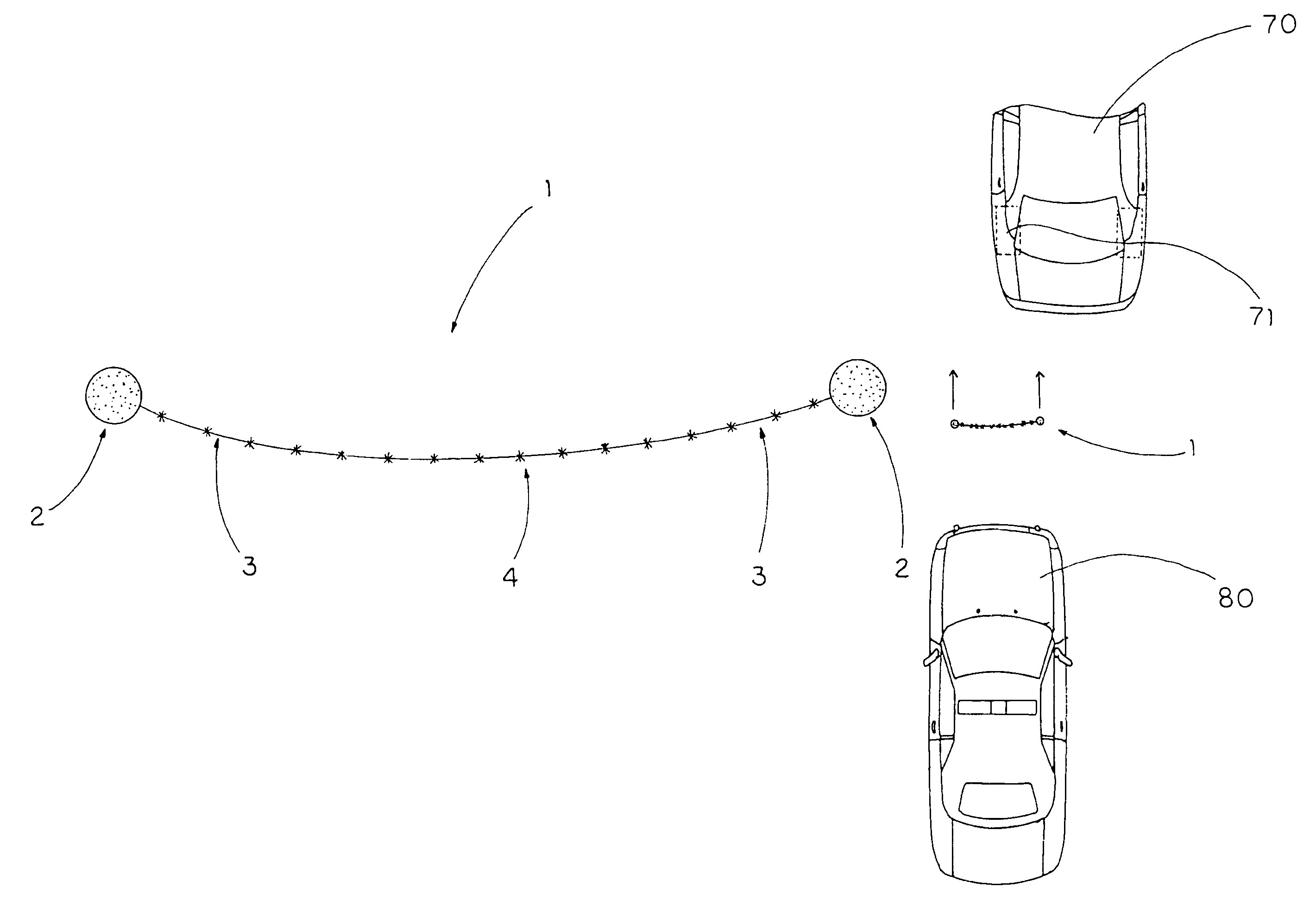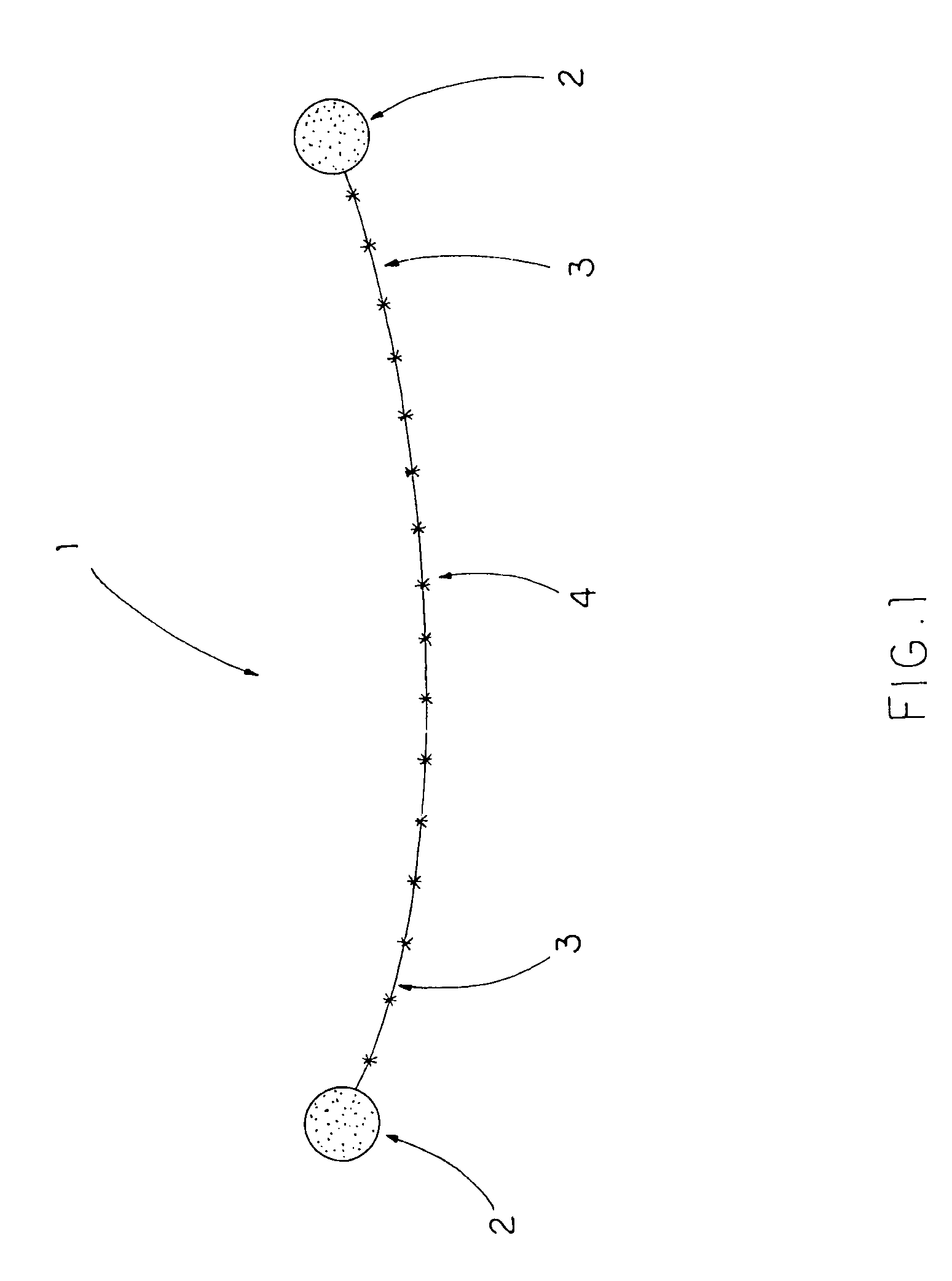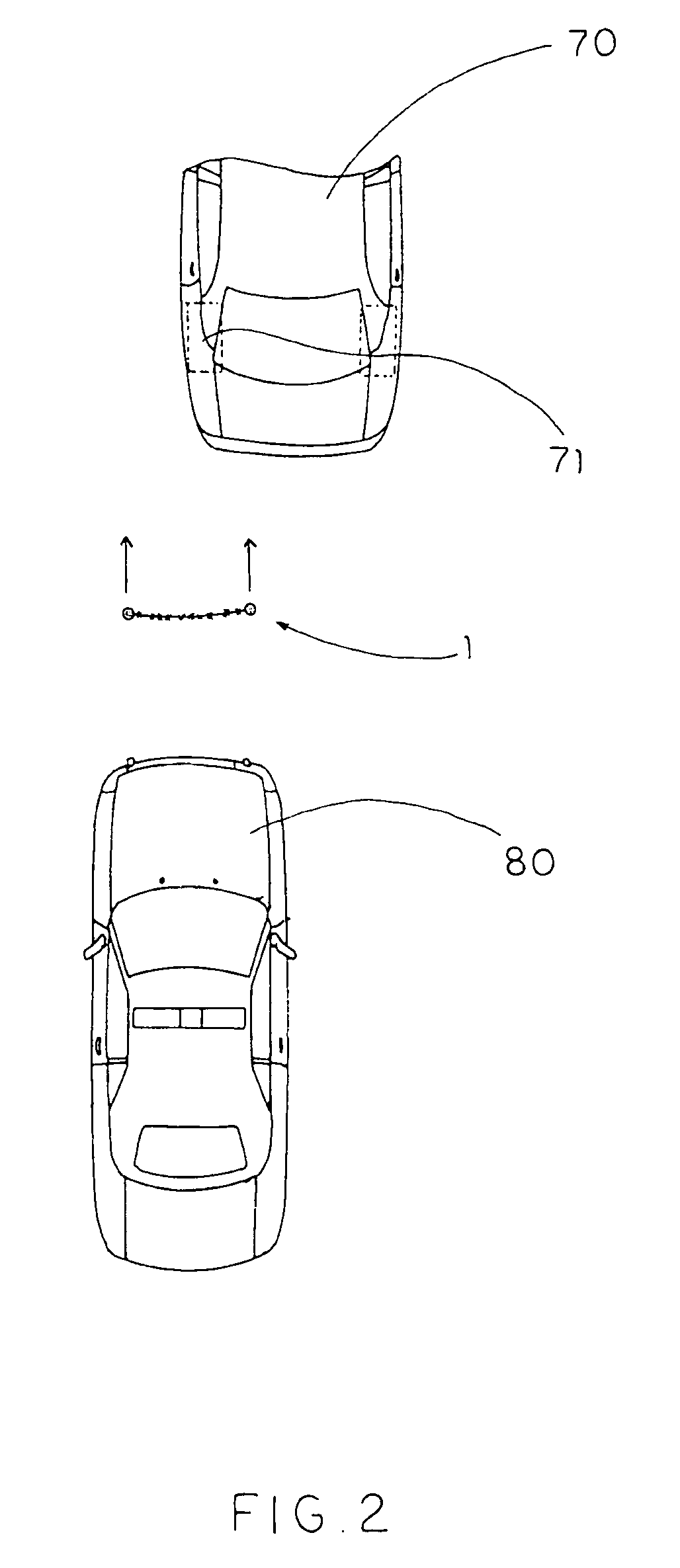Entrapment snare for the termination of vehicle pursuits
a technology of vehicle pursuit and entrapment snare, which is applied in the direction of roadway safety arrangements, roads, construction, etc., can solve the problems of high-speed vehicle pursuit, injuring and killing many innocent people, and currently facing law enforcement, so as to reduce the rotational radius
- Summary
- Abstract
- Description
- Claims
- Application Information
AI Technical Summary
Benefits of technology
Problems solved by technology
Method used
Image
Examples
Embodiment Construction
[0038]FIG. 1 shows an entrapment snare 1 consisting of a flexible cable 3 with projectile weights 2 attached to each end of cable 3. Hooked barbs 4 such as fishing tackle are attached to cable 3 at intervals along said cable.
[0039]FIG. 2 shows the entrapment snare 1 after it has been launched from a police vehicle 80 toward a fleeing suspect vehicle 70. In FIG. 2, the left rear tire 71 of fleeing suspect vehicle 70 has been targeted by the police vehicle 80. FIG. 3 shows the entrapment snare 1 after it has been launched by projection means 100 from the police vehicle 80. As can be seen, entrapment snare 1 is traveling on or very near the surface of the ground as it heads toward the targeted tire 71 of the fleeing vehicle 70. The projectile weights 2 (shown in FIG. 1) have been forcefully projected horizontally (at ground level) in a forward direction at one of the rear tires 71 of the fleeing vehicle 70 such that the weights 2 bracket the tire 71, one weight 2 going to the left of t...
PUM
 Login to View More
Login to View More Abstract
Description
Claims
Application Information
 Login to View More
Login to View More - R&D
- Intellectual Property
- Life Sciences
- Materials
- Tech Scout
- Unparalleled Data Quality
- Higher Quality Content
- 60% Fewer Hallucinations
Browse by: Latest US Patents, China's latest patents, Technical Efficacy Thesaurus, Application Domain, Technology Topic, Popular Technical Reports.
© 2025 PatSnap. All rights reserved.Legal|Privacy policy|Modern Slavery Act Transparency Statement|Sitemap|About US| Contact US: help@patsnap.com



